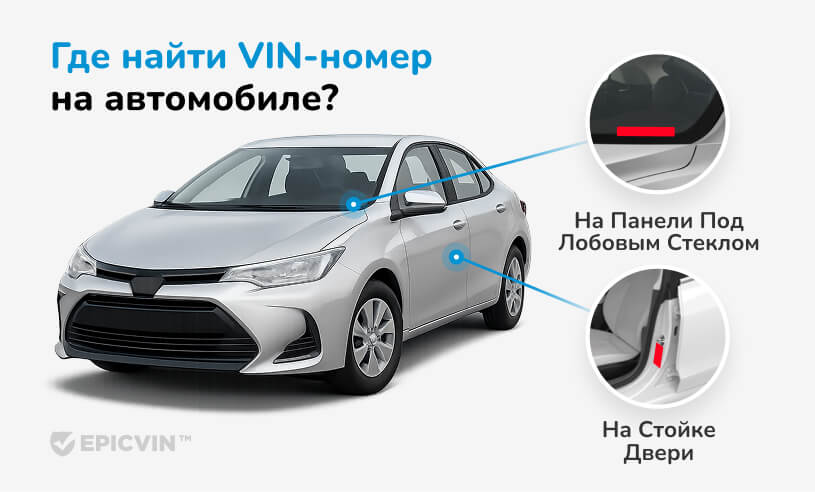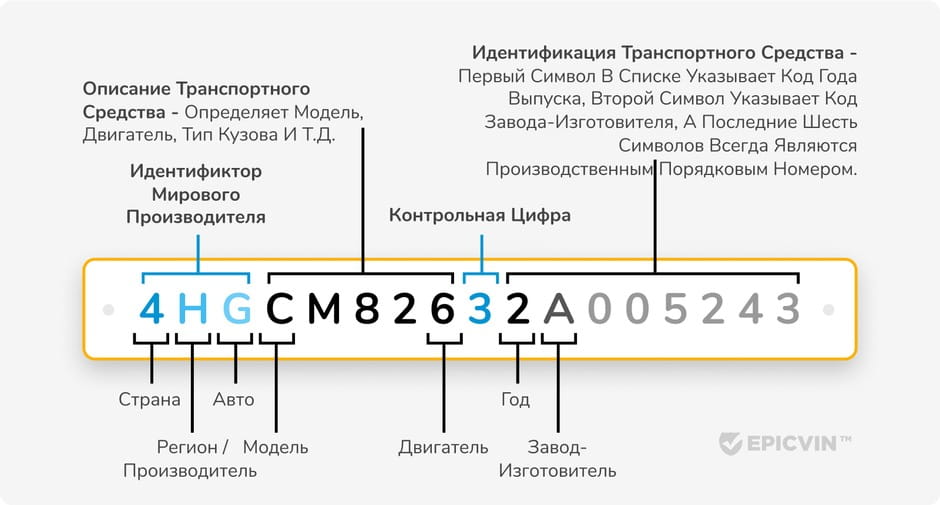
Что такое VIN номер и как узнать комплектацию авто?
В этой статье вы найдете все, что вам нужно знать об автомобиле: от понимания...

Бесплатный VIN-декодер Tesla! 🚗 Узнайте комплектацию, характеристики и историю Tesla по VIN номеру без регистрации. Полный отчёт - одним кликом! 🛡️✅
Ищете VIN?
Вот где его можно найти:

Каждый автомобиль Tesla имеет уникальный 17-значный VIN. Он зашифровывает важнейшие сведения о производстве, модификации и происхождении. Наш VIN decoder осуществляет расшифровку VIN Tesla мгновенно: вы узнаете комплектацию, особенности модели и даже дату сборки. Если ввести неверный номер, система выдаст предупреждение — защита от подделок и ошибок.
Getting your Tesla's complete history is simple with our decoder system.

VIN-номер Tesla расположен в нескольких стратегически важных местах:
| Фактор риска | Процент или ключевой показатель |
|---|---|
| История аварий | ≈ 28 % отчётов Tesla на EpicVIN содержат ≥ 1 запись о повреждении |
| Статус утилизации/восстановления | ≈ 24 % Tesla на Copart имеют статус утиль или не подлежат ремонту |
| Средний пробег | ≈ 105 000 миль у автомобилей старше 10 лет |
| Активные отзывы (2025) | 3 кампании затронули ≈ 661 000 авто с января по март |
| Тип | Подробности |
|---|---|
| Отказ мультимедийного блока (MCU) | Проблемы с памятью eMMC, более 130 000 авто под отзывом |
| Поломка подвески и рулевых рычагов | Более 120 000 замен из-за коррозии |
| «Фантомное торможение» | Более 2,4 млн авто под коллективным иском в США |

Каждый символ в VIN имеет своё значение. Вот стандартная структура VIN:
| Символы | Пример | Что означает |
|---|---|---|
| 1 | 5 | США — страна производства |
| 2 | Y | Tesla — производитель |
| 3 | J | Тип — легковой автомобиль |
| 4–8 | SA1E2 | Model S, аккумулятор Long Range, двойной мотор, система пассивной безопасности |
| 9 | 5 | Контрольная цифра (Check Digit) для валидации VIN |
| 10 | M | Модельный год — 2021 |
| 11 | F | Завод во Фримонте, Калифорния |
| 12–17 | 001234 | Индивидуальный серийный номер автомобиля |
Год 2018
Марка Tesla
Модель Model S
Тип топлива Electric
Двигатель
Сделано в USA
Каждый отчёт, созданный нашим декодером VIN Tesla, содержит точные технические и производственные данные автомобиля:
Прежде чем покупать подержанную Tesla, введите её VIN на сайте EpicVIN. Всего за несколько секунд вы узнаете оригинальные характеристики, возможные откаты пробега, отзывы по батарее или Autopilot, а также наличие залога или повреждений — факты, которые помогут вам сэкономить тысячи.Алекс Блэк, директор по маркетингу и автоэксперт, EpicVIN
Да. Бесплатная версия покажет модель, комплектацию, тип мотора и завод. Полный отчёт — за плату.
Практически все: Model S, Model X, Model 3, Model Y, Roadster и Cybertruck.
Введите VIN в EpicVIN и откройте раздел «Отзывы». Данные NHTSA обновляются в реальном времени.
Да, отдельные символы показывают количество двигателей, архитектуру батареи и завод. В полном отчёте EpicVIN уточняется точный размер батареи и версия оборудования.
Система синхронизируется ежедневно с DMV, NMVTIS, аукционами и базами отзывов Tesla. Новые VIN появляются в течение 24 часов.
Ознакомьтесь с советами экспертов, новостями и консультациями по покупке и техническому обслуживанию подержанных автомобилей

В этой статье вы найдете все, что вам нужно знать об автомобиле: от понимания...

Наша статья подробно расскажет Вам где можно найти VIN транспортного средства...

Статья, в которой рассказывается о разнице между маркой и моделью автомобиля.